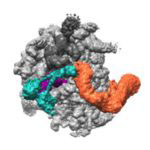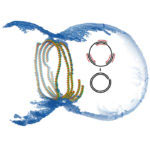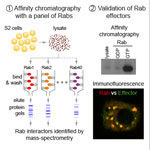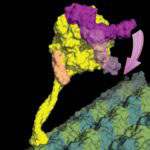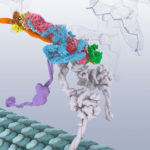
Dynactin is a protein complex that activates the dynein motor protein, enabling intracellular transport. It is extremely flexible and has proved very difficult to study by conventional crystallography methods. Now for the first time, research carried out by Andrew Carter and his group in the LMB’s Structural Studies Division, has revealed the structure of this large dynactin complex, using electron cryo-microscopy (cryo-EM).
